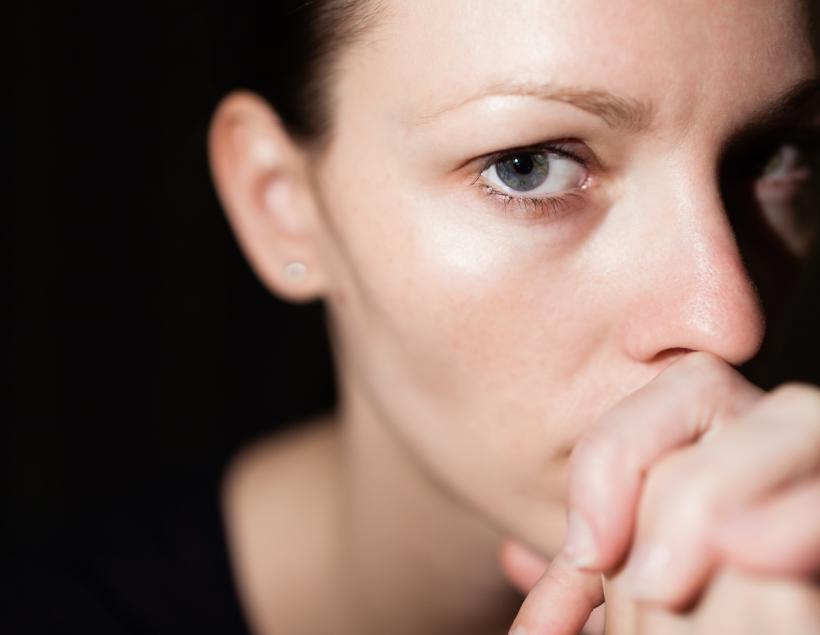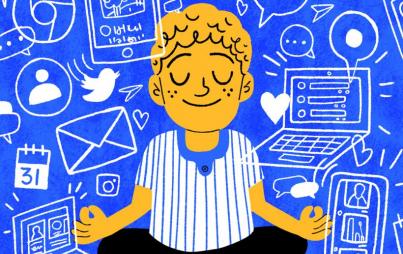
Whenever a thought pops up into my mind, I stop, assess it, and then talk it off its ledge. Imagine doing this 50 times a day — it gets tiring.
Anxiety disorders — PTSD, OCD, and Panic Disorder, to name a few — are the most common mental illnesses in the United States, with about 18% of the population struggling with one. That’s nearly 40 million adults, according to the National Institute of Mental Health. Not to mention the uncounted: young adults with anxiety, people who suffer in silence either out of fear, choice, or because of a lack of insurance.
I’m not the kind of person you’d expect to have anxiety.
When you see me, I read as genuinely social, I run a fairly popular online magazine for which I act as a sort of “face,” and any anxieties I feel are generally zipped-up tight. Not prone to sharing incredibly painful feelings. Not known for needing a trigger warning. Viciously opinionated, yet diplomatic. Capable of good work. Fairly prolific. Capable of travel (alone). Intensely ambitious. Not fearful of anything you’d know about, anyway.
But the reality isn’t so simple; excessive, irrational rumination plagues my everyday life. I worry about the things that live in between the lines — what someone said, how they said it, what they didn’t say, what I said, what they feel, what they don’t feel, what I perceive they feel. Mostly, I worry that my own perceptions are false. I obsess on my false projections, my limitations. I obsess on my irrational ideas and I obsess on my obsessions.
Reality is not easily defined for me, because sometimes I feel like I’m wading through a thick, black muck of made-up ideas. And a part of me knows I make myself anxious, but I can’t stop it. So, “getting a grip on reality” is basically very difficult. I can’t step outside the tiny, vicious bubble of this very moment right now — so seeing a future, or a light, or a reality that isn’t this reality right now, is nearly impossible.
I liken it to Instagram personalities whose accounts tell a story of color and beaches, fabric and healthy food, groups of friends and amazing experiences. The narrative belies the struggle, which could be anything: an eating disorder, depression, social anxiety, an obsession with perfection, loneliness.
And while I know where my “worry problem” comes from (PTSD), it’s a Sisyphean task to turn it off. Our minds are literally wired to think certain ways. In my case, I grew up second guessing everything. I was taught to worry like I was taught to eat, to wash my face, to not die. It became as involuntary as breathing.
This is the silent underbelly of my day: a boiling, raging, exhaustive epicenter.
Magma of constant analysis. Crippling fear of the self getting in the way of the self. And so on.
I have a family member with panic disorder. Their disorder is marked by panic attacks at the weirdest times, irrational associations, irritable bowel syndrome, social fears and the need to disappear from reality. Their sickness looks different from mine, it takes a different shape. It’s physical, louder, more noticeable. So when I talk to them about understanding their feelings, they say, “You’re totally fine, I’m the mess!” They’re not trying to be reductive at all, I know this. Because when they’re hunched over the toilet in seemingly random fear, hiding inside their house, I’m publishing essays or meeting with other writers. How could we both be suffering? Is there some sort of privilege in suffering silently? I think not.
With everyone consistently proclaiming, “You? Anxiety? But you seem so well-adjusted/put together/inspiring” — which, thank you, you’re so kind! — so continues the spiral of invisibility.
And while I can complain about the invisibility of it all, I’m of the mindset that complaint can’t be made without an attempt to change. I don’t get to air my grievances without trying to find a solution. I don’t want to.
Mariana*, 35-years-old, says, “Anxiety is something I struggle with every day and affects even basic things like texting friends. When I tell people I deal with social anxiety, I get a range of reactions from genuine surprise to understanding and compassion. For everyone else, it's a vague sense of sympathy, but not something they really understand. And I do try to hide it as much as possible, because I think it makes me look less competent professionally.”
Gabrielle, a college student, agrees, saying that people reduce her deep-seated anxiety issues to being stressed. “It feels like everything (including myself) is moving so fast that I can't keep up — except I have to. I don't have a choice, so I block out as much of the feeling as I can, which is never enough. And these days so many people seem to use "stress" and "anxiety" interchangeably, especially on a college campus, that it makes me worry that the debilitating panicky feeling that I have all the time is normal, even though I know it isn’t.”
Ashley Bethard, a digital content manager for a national media brand, has high-functioning anxiety and shares the same sentiments I do, hitting on the interesting idea that if you’re not seen as physically sick, your sickness isn’t real.
Bethard says, “It’s invisible. I’m good at my job. I logically understand what needs to be done, how to prioritize, and how to manage my time. The professional skills I’ve cultivated through the years have served me well, and without them, I probably wouldn’t be doing the quality of work I’m doing. [But] there’s definitely a stigma around it. When I’ve shared this with people, sometimes the response has been incredulous: 'Really? But you’ve got it together.' I think there’s a bias against something you can’t really see, like, if someone is high-functioning or successful, they can’t have anxiety."
The reality is: do we really want people to agree with us? Do I really want them to tell me I’m losing it? No.
No one wants to be put on blast for their weaknesses or wiring issues. I wish there was a way to better understand the silent majority — the people who suffer every day. The people who don’t speak out because everything they’ve ever done right in their lives — their successes, their jobs, their full social circles — makes having anxiety seem like a lie, or worse, like a bandwagon appeal for sympathy.
For anyone who says we’re “put together,” try something new. Take a simpler approach. Instead of being polite and saying we don’t seem “anxious” or “crazy” or that we’re “good at hiding it,” just acknowledge that it sucks. Because whether we’re consciously hiding it or not, it’s there. Just say, “damn, I’m sorry.” Validate it.
And while I can complain about the invisibility of it all, I’m of the mindset that complaint can’t be made without an attempt to change. I don’t get to air my grievances without trying to find a solution. I don’t want to.
For the longest time, scientists thought the brain was a fixed thing — immutable, incapable of change. But in recent years, scientists have been studying neuroplasticity — the idea that the brain can, according to Stanford.edu, “compensate for injury and adjust their activity in response to new situations or changes in their environment.”
The thing is, this plastic adaptability can turn on itself, so “the same characteristic, which makes your brain amazingly resilient, also makes it vulnerable to outside and internal, usually unconscious, influences.” Which means that we are, every single day, training, enabling and permitting our brains to continue the behavior that they may have learned from external forces. What a mess.
According to The Brain That Changes Itself: Stories of Personal Triumph from the Frontiers of Brain Science, positive thinking — a once scoffed-at scientific concept — can actually create opportunities for rewiring. It’s hard to nail down and it’s even harder to master, but being mindful of training is the first step.
For Bethard, she tries to manage her anxiety in other specific ways: “I eat healthy, I exercise, I go to therapy. I try to cut myself a break when I need one. One of the most important things therapy taught me was to set more boundaries for myself, personally and professionally. I protect my time and energy more. I say “no” more, and I push back against things I’m not comfortable with. It’s not perfect, it’s a continual practice. [Because] it can be absolutely paralyzing. When it’s particularly tough, I find myself completely drained at the end of a workday — dry as a bone, with no energy left for anything else. That’s one of the worst parts about it. I can have all of these other things I want or need to do, but no energy to do it.”
Like Bethard, I’ve begun trying, too. I try to schedule time to turn my brain off. I go to the gym and run or I color in an adult coloring book.
Mindfulness is a feat.
Whenever a thought pops up into my mind, I stop, assess it, and then talk it off its ledge. Imagine doing this 50 times a day — it gets tiring. But what’s more tiring is doing it for the next 50 years. (I’ll pass, thanks.)
For now, I’m going to try my best to reroute my mind. It won’t always work, I won’t always be worry-free, and you’ll always think I have my act-together. But at least I’ll try, which scientists say is worth something. The mind, as we now know, is a pliable, sometimes forgiving thing.








